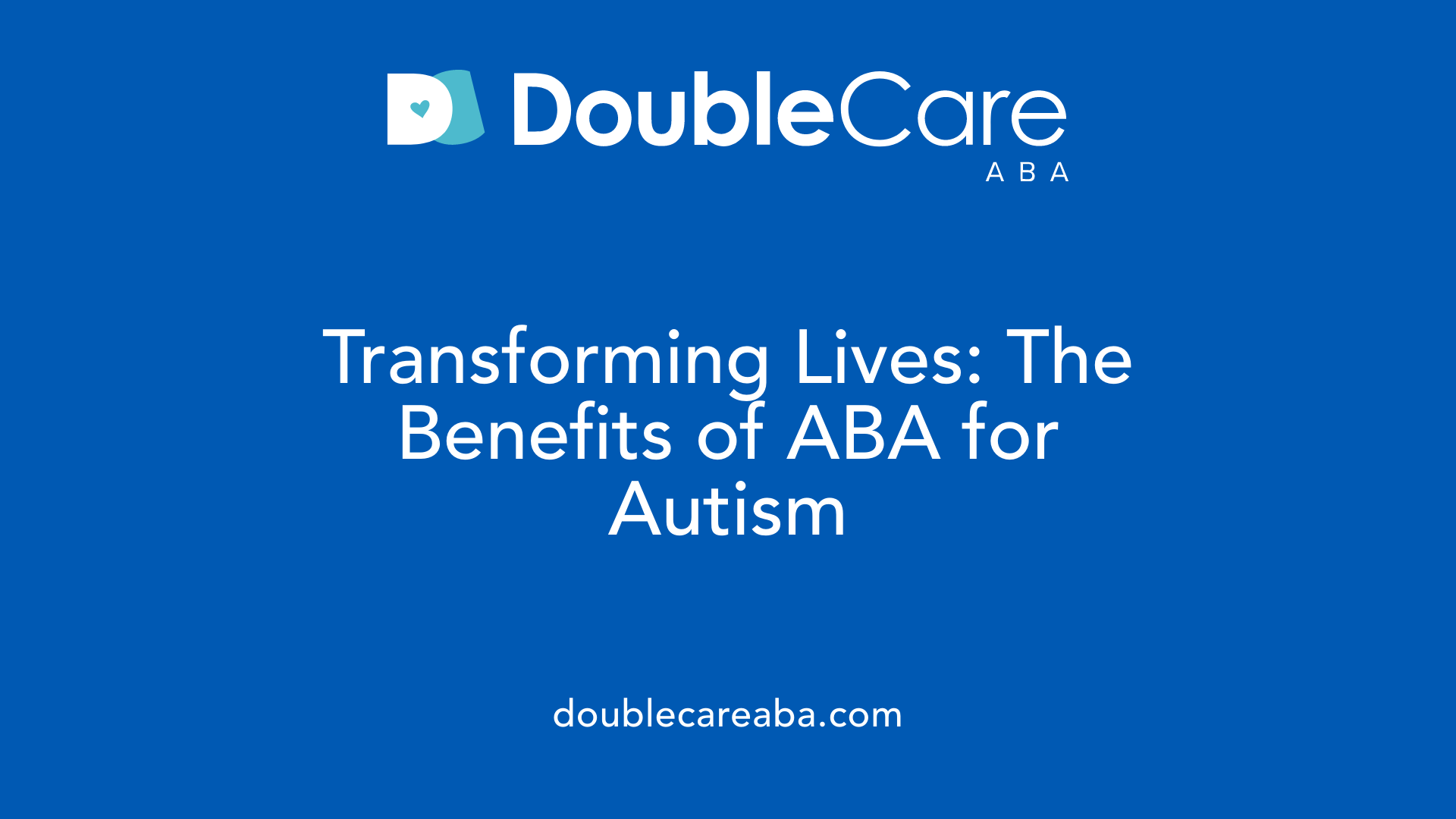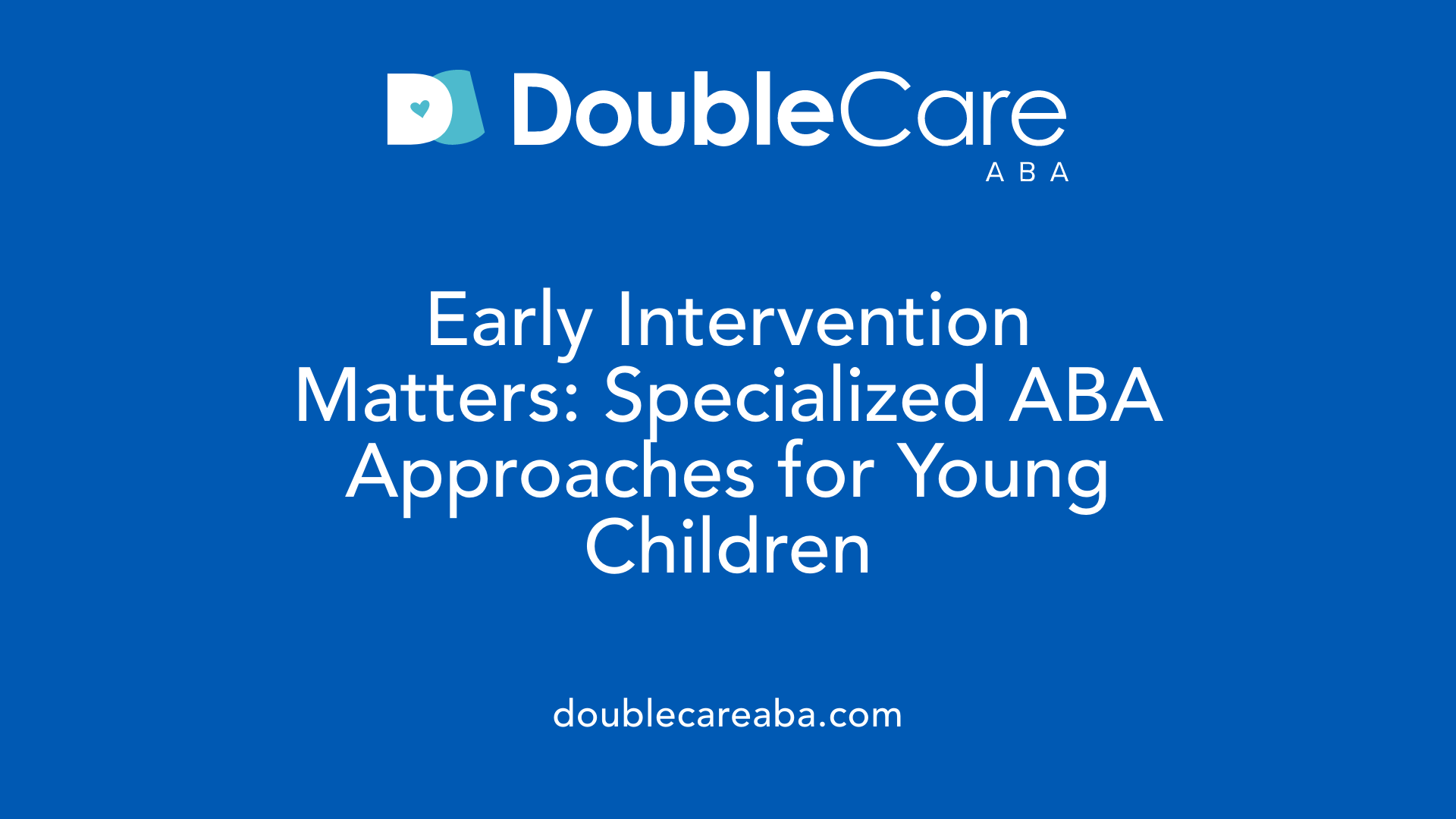Helping People with Autism Develop Emotional Independence
Empowering Autistic Individuals Through Targeted Behavioral Therapy

Understanding Emotional Independence in Autism
Developing emotional independence is a crucial goal for individuals with autism spectrum disorder (ASD), allowing them to navigate social interactions, regulate emotions, and build personal autonomy. Applied Behavior Analysis (ABA) therapy is a scientifically grounded approach that supports these developmental areas by enhancing communication, social skills, and adaptive behaviors. This article explores how ABA and its integrated methods empower people with autism to achieve greater emotional independence and quality of life.
What is Applied Behavior Analysis (ABA) Therapy?

What is applied behavior analysis (ABA) therapy and how is it used for autism?
Applied Behavior Analysis (ABA) therapy is a scientifically grounded approach focused on understanding and changing behavior through the principles of learning and behavior science. It is widely used in autism treatment to help individuals acquire important functional skills while decreasing behaviors that may interfere with their development and daily life.
Definition of ABA therapy
ABA therapy involves the systematic application of behavioral principles to promote positive changes in behavior. It primarily emphasizes how behavior is influenced by the environment and utilizes strategies to increase helpful behaviors such as communication, social interaction, and self-care while reducing harmful or impeding behaviors.
Principles of learning and behavior science
Central to ABA is the understanding of the 'A-B-C' model—Antecedent (what happens before a behavior), Behavior itself, and Consequence (what follows). This model guides intervention by identifying triggers and outcomes that reinforce behaviors. Positive reinforcement, among other techniques, encourages the repetition of desirable behaviors.
Goals of ABA in autism treatment
ABA aims to improve a broad range of skills including language, communication, attention, social skills, memory, academics, and daily living. Treatment is personalized, with goals tailored to each individual’s unique needs, skills, interests, and family situation. Ongoing assessment and data collection help track progress and adapt goals as needed.
Core techniques and individualized programs
ABA uses methods such as discrete trial training, natural environment teaching, and modeling. Programs are developed by qualified professionals like Board Certified Behavior Analysts (BCBAs) and involve caregivers to ensure generalization of skills across settings. This individualized, evidence-based therapy has demonstrated effectiveness in enhancing adaptive behaviors and is often integrated with speech therapy, occupational therapy, and psychotherapy for comprehensive care.
Overall, ABA therapy remains one of the most reliable and scientifically supported interventions for helping individuals with autism achieve meaningful improvements in communication, social interaction, and independence.
Qualified Professionals Behind ABA

Types of ABA Providers
ABA therapy is delivered by a range of trained professionals specializing in behavioral interventions. The key providers include:
- Board-Certified Behavior Analysts (BCBAs): These are highly qualified experts who design and oversee ABA treatment plans.
- Assistant Behavior Analysts (BCaBAs): They assist BCBAs in implementing therapy under supervision.
- Registered Behavior Technicians (RBTs): RBTs provide direct one-on-one therapy, executing treatment strategies tailored by BCBAs.
Certification and Training
To become certified, BCBAs and BCaBAs must complete graduate-level coursework, supervised fieldwork, and pass certification exams administered by the Behavior Analyst Certification Board (BACB). RBTs also undergo standardized training and competency assessments. Ongoing continuing education is mandatory to maintain certification levels and stay current with advances in the field.
Settings Where ABA is Delivered
Professionals provide ABA therapy across diverse environments including:
- Clinics dedicated to autism and developmental disorders
- Schools, integrating therapy with educational goals
- Home settings, facilitating skill generalization in natural environments
- Healthcare facilities, coordinating multidisciplinary interventions
Role of Ethical Standards in Therapy
Ethical guidelines play a crucial role in ensuring ABA providers deliver responsible, respectful, and effective care. Providers must uphold confidentiality, obtain informed consent, use evidence-based interventions, and tailor treatments to each individual’s needs. These standards safeguard client welfare and promote professional accountability.
Together, these qualified professionals form a multidisciplinary team dedicated to facilitating skill acquisition and behavior improvement in individuals with autism spectrum disorder through scientifically grounded ABA methods.
Benefits of ABA Therapy for Autism

What are the benefits of ABA therapy for people with autism?
ABA therapy offers significant improvements in multiple areas crucial for individuals with autism. One of the main benefits is enhanced communication skills. ABA helps develop language, social interaction, attention, and focus, allowing children with autism to better express their needs and connect with others.
How does ABA therapy improve adaptive behaviors and independence?
ABA targets adaptive behaviors such as self-care, play, motor skills, and daily living activities. It encourages helpful behaviors while reducing challenging or harmful ones through techniques like positive reinforcement. These improvements support greater independence and more successful integration into everyday environments.
What research evidence supports ABA outcomes?
Research strongly supports the effectiveness of ABA. Studies have demonstrated significant gains in adaptive behaviors, social skills, communication, and emotional regulation in children with autism following ABA interventions. Validated tools like the Kindergarten Inventory of Social/Emotional Tendencies (KIST) confirm these positive effects. ABA is recognized by health authorities as an evidence-based best practice.
What are the long-term developmental advantages of ABA therapy?
Consistent, individualized ABA therapy leads to long-term benefits such as increased IQ, language development, better emotional control, and reduced problematic behaviors. Early and intensive ABA intervention especially promotes sustained developmental progress, social participation, and quality of life improvements.
| Benefit Area | Specific Improvements | Supporting Details |
|---|---|---|
| Communication Skills | Language, social interaction, attention | ABA builds communication fundamentals and fosters engagement |
| Adaptive Behaviors | Self-care, motor skills, daily living | Focuses on independence and reducing challenging behaviors |
| Research Support | Validated improvements in social, emotional domains | Endorsed by U.S. health authorities and numerous studies |
| Long-Term Advantages | IQ, emotional regulation, social participation | Early intensive therapy linked with lasting functional gains |
Integrating ABA with Complementary Therapies
How Does Speech Therapy Collaborate with ABA?
Speech therapy pairs effectively with ABA by enhancing language and social interaction skills. While ABA focuses on teaching communication fundamentals through methods like positive reinforcement and modeling, speech therapy targets articulation, comprehension, and verbal expression. This complementary approach allows for a stronger foundation in communication, facilitating improved interpersonal skills for children with autism.
What Role Does Occupational Therapy Play in ABA Programs?
Occupational therapy works alongside ABA by concentrating on self-care, fine and gross motor skills, and sensory integration. It helps individuals develop daily living skills such as dressing, eating, and managing sensory challenges. This synergy supports the generalization of learned behaviors in natural environments, making therapy outcomes more practical and effective for everyday life.
How Is Psychotherapy Integrated to Aid Emotional Regulation?
Psychotherapy complements ABA by addressing emotional regulation, anxiety reduction, and social interactions. Integration helps support socio-emotional development, enabling children with autism to better manage feelings and improve social bonds. Cognitive-behavioral therapy (CBT), in particular, is used to handle anxiety and depression alongside behavioral interventions.
Why Are Multidisciplinary, Personalized Approaches Important?
ABA programs are individualized, designed by qualified behavior analysts to suit each person's skills, needs, interests, and family context. Incorporating speech therapy, occupational therapy, and psychotherapy creates a comprehensive treatment plan tailored to the individual. This multidisciplinary strategy improves developmental outcomes and quality of life by addressing multiple dimensions of functioning.
Together, these integrated therapies provide a holistic support system. By combining ABA with related disciplines, treatment becomes more effective and better aligned with each child's unique profile and goals.
Innovations Enhancing ABA Effectiveness
How is technology used in ABA therapy?
Technology has become an important ally in advancing Applied Behavior Analysis (ABA) therapy. Modern interventions often integrate technological tools to boost engagement and tailor treatment plans precisely to each learner’s needs. These innovations support skill acquisition and help therapists monitor progress in real time.
What roles do mobile apps and virtual reality play in ABA?
Mobile applications designed for ABA interventions offer interactive exercises that make learning more fun and accessible. They allow consistent, accessible practice outside clinical settings. Virtual reality (VR) adds immersive experiences where learners can safely practice social skills and daily routines in a controlled, stimulating environment. This can increase motivation and attention during therapy sessions.
How does artificial intelligence personalize ABA treatments?
Artificial intelligence (AI) supports ABA by analyzing large amounts of behavioral data to identify patterns and adjust interventions dynamically. AI-driven platforms help create individualized treatment plans, optimizing reinforcement schedules and teaching strategies. This level of personalization enhances therapy effectiveness and ensures goals are appropriate for each individual’s progress.
What impact do these technologies have on skill generalization and motivation?
Integrating technology in ABA assists with generalizing learned skills beyond clinical settings into everyday life by providing consistent practice opportunities in familiar or simulated environments. Moreover, interactive and immersive tools maintain high motivation levels, which is crucial for learning. When children are engaged and motivated, therapy outcomes improve significantly.
These innovations not only make ABA therapy more accessible and enjoyable but also deepen its effectiveness in fostering meaningful developmental gains for children on the autism spectrum.
Early and Specialized ABA Interventions

What is the Early Start Denver Model and which ages does it target?
The Early Start Denver Model (ESDM) is an early intervention approach designed specifically for young children with autism, particularly those aged one to four years. It aims to accelerate development across social, emotional, cognitive, and language domains while simultaneously reducing autism symptoms. Therapists, parents, and family members collaborate to perform interventions during play and daily routines, making it a naturalistic and comprehensive method for early developmental support.
What is Pivotal Response Treatment and how does it function as play-based ABA?
Pivotal Response Treatment (PRT) is a play-based form of ABA that targets pivotal behaviors such as motivation and initiation of communication. These pivotal skills create wide-ranging improvements in social and communication abilities. PRT sessions are conducted both in clinical settings and at home, with a strong emphasis on consistency across all caregivers to maximize its effectiveness. This approach allows children to learn through naturalistic play, supporting engagement and generalization of skills.
How does Discrete Trial Training operate as a teaching method within ABA?
Discrete Trial Training (DTT) is an ABA teaching style characterized by short, simple tasks presented one at a time. Correct responses by the child are immediately rewarded to encourage the desired behavior, and prompts are systematically faded as the child gains independence. This structured method is widely used to build foundational skills such as language, attention, and daily living tasks in a focused and measurable way.
What role does parental involvement play in home programs for ABA?
Parental involvement is crucial for the success of ABA interventions. Caregivers are trained to use ABA techniques in everyday environments, which helps generalize learned skills beyond therapy sessions. Parents' active participation in home programs ensures that behavioral strategies are consistently applied, supporting emotional, social, and communication development. This collaboration often leads to better developmental outcomes and quality of life improvements for children undergoing ABA therapy.
Addressing Criticisms and Ethical Considerations
Are there any criticisms or controversies surrounding ABA therapy?
Applied Behavior Analysis (ABA) therapy is broadly recognized for its effectiveness in supporting children with autism. However, it has also faced valid criticisms centered on historical practices. Earlier approaches were often intensive and behavior-focused, sometimes emphasizing compliance in ways that could feel demanding for the individual. Some opponents worry that this focus might suppress natural behaviors and limit personal autonomy.
Modern ABA methods have shifted substantially, prioritizing positive reinforcement and respect for each individual's uniqueness. The therapy aims to empower rather than coerce, tailoring programs to the person’s needs and interests. This evolution reflects increased sensitivity to the individual's emotional well-being and dignity.
A significant ethical discussion involves the recognition of neurodiversity—the understanding that neurological differences like autism are natural variations of human identity. Some advocates caution against therapy goals that push children toward conformity at the expense of their personal identity. Therefore, it’s crucial that ABA practitioners balance effective skill-building with respect for individuality and self-expression.
Ethical ABA practice requires ongoing assessment to ensure interventions are supportive and non-intrusive. Family involvement and informed consent also play important roles, helping keep the treatment aligned with the individual's and family's values. This balanced approach fosters both meaningful development and respects personal rights, reflecting the evolving standards of care in neurodiverse populations.
Facilitating Emotional Independence Through ABA
How Does ABA Help With Emotional Regulation and Anxiety Reduction?
ABA therapy incorporates techniques that target emotional regulation and anxiety reduction, crucial areas for children with autism spectrum disorder (ASD). By using behavioral strategies such as positive reinforcement and systematic exposure, ABA helps individuals recognize and manage their emotional responses effectively. When combined with psychotherapy, ABA supports anxiety management and enhances social interactions, enabling individuals to better cope with daily challenges.
How Is Skill Generalization to Natural Environments Supported By Families?
An essential component of ABA’s success in emotional development is the active involvement of family members. Caregivers are trained to apply ABA techniques consistently across various natural settings like home and community. This family support ensures that emotional regulation skills and social behaviors are generalized beyond clinical environments, making them functional and relevant in real-life situations.
How Does ABA Encourage Self-Care and Social-Emotional Development?
ABA programs focus on building self-care abilities alongside social-emotional growth. Therapists design individualized goals that include daily living skills such as dressing, eating, and personal hygiene, combined with social skills training. These goals empower individuals to interact confidently with others and manage their own emotional well-being, promoting independence.
In What Ways Does ABA Empower Individuals to Manage Emotions for Autonomy?
By teaching techniques through repeated practice and positive reinforcement, ABA equips individuals with tools to identify their emotions and respond adaptively. Over time, they learn to self-monitor and regulate feelings like frustration or anxiety. This empowerment fosters autonomy, allowing individuals to navigate social interactions and daily challenges with greater independence and self-confidence.
Supporting Lifelong Emotional Independence
Applied Behavior Analysis therapy represents a scientifically validated pathway to fostering emotional independence in individuals with autism. Through its individualized, evidence-based methods, ABA supports the acquisition of communication skills, social competence, and adaptive behaviors necessary for managing emotions and daily life effectively. When combined with integrated therapies and modern technological tools, it equips autistic individuals with essential tools for autonomy and personal growth. Addressing ethical concerns and emphasizing respect for individuality ensures that ABA remains a compassionate and empowering intervention. Ultimately, ABA’s multifaceted approach holds the promise of improving quality of life and enabling people with autism to thrive emotionally and socially.
References
- Applied Behavior Analysis (ABA)
- Applied Behavior Analysis: Key Points to Improve Autism ...
- Behavioral Therapy for Autism Spectrum Disorder in Children
- Applied Behavioral Analysis: Overview, Techniques & Cost
- Treatment and Intervention for Autism Spectrum Disorder
- The effectiveness of applied behavior analysis program ...
- The Controversy Around ABA
- Concerns About ABA-Based Intervention: An Evaluation and ...
- Debunking 7 Common Myths About ABA Therapy - GSEP Blog
- The effectiveness of applied behavior analysis program ...













